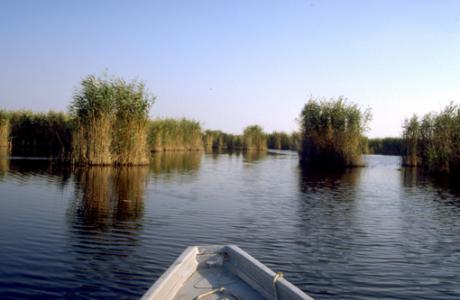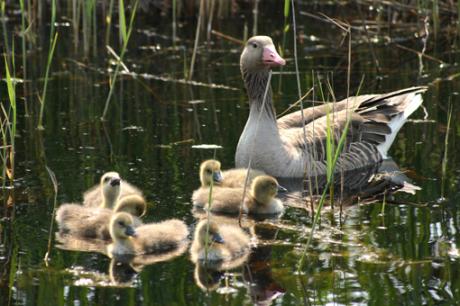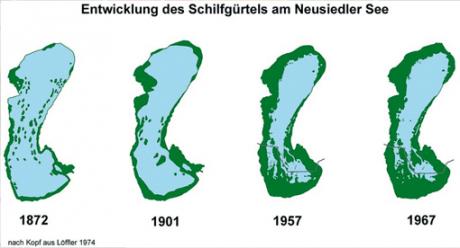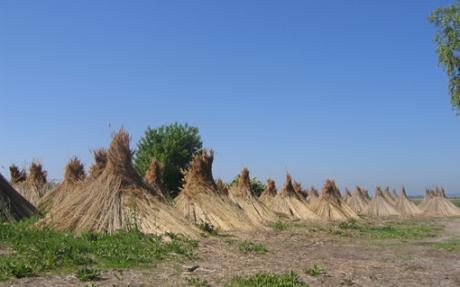The reed belt
 The lake is almost completely surrounded by a reed belt and so it forms the habitat of the unique fauna of this region. Moreover, the continuous reed is the largest reed area in Europe after the Danube delta.
The lake is almost completely surrounded by a reed belt and so it forms the habitat of the unique fauna of this region. Moreover, the continuous reed is the largest reed area in Europe after the Danube delta.
The reed belt is an essential part of the Neusiedler See Biosphere Reserve and it is situated here in Breitenbrunn. So don’t miss an opportunity to walk very closely through this nature reserve on your way to or from the natural lake resort.
Airy companions
 The reed belt is of greatest importance to the bird world, including the great wading birds (silver, grey, purple, night herons, little egrets, and spoonbills).
The reed belt is of greatest importance to the bird world, including the great wading birds (silver, grey, purple, night herons, little egrets, and spoonbills).
A large number of songbirds populate the reed belt. The most widespread species are thrush, pond warbler, reed warbler, the moustache warbler, reed bunting, bearded Tit and bluethroat. The reed belt provides a habitat not only for a large number of songbirds, but also for various species of rail such as grouse, water rail, pond grouse, small marsh grouse and spotted grouse.
Furthermore the reed belt plays an important role as breeding place for many duck species such as grey geese, but also for the European-wide endangered moorland duck. Another noteworthy point is that the largest population in Central Europe of the marsh harrier, also breeds in reeds. Certainly of international importance are the populations of the mustached Warbler, Little Crake and Bearded Tit.
It hums and quacks
The most unpleasant inhabitants, mosquitoes are widely known in lake communities. Despite their unpleasant characteristics, mosquitoes play an important role in the food web of many bird species, amphibians and bats.
Water banks or the edge of the reed belt are populated by dragonflies, sun-loving flight acrobats, which - when hunting insects remain in flight and can also fly backwards. Prey-animals are above all flies, that they draw with its thorny, basket-like collapsible legs from the air as it were in the flight.
The area of the sedimentation zones of the reed belt and its canals are of great significance as habitat and spawn-place of many rare frog- and toad types.
Interesting development
Due to the prevailing northwestern air current, considerably less reed grows on the eastern shore than on the western shore. Near Donnerskirchen the reed is up to five kilometers wide, Podersdorf lies at the only reed-free beach section of two kilometers length. The passages through the reed belt are called gorges. Partly the reed belt grows towards the middle of the lake and encloses areas like the Silbersee in the south.
 Until the middle of the 19th century, reeds were only found in places on the lake shore, mainly in Hanság (now a lowland moorland in the southeast of the lake). From 1909 to 1965, the reed belt grew strongly due to the introduction of fertilizer in agriculture and a low salt content in the water. Today the reed covers an area of almost 100 square kilometers just in Austria.
Until the middle of the 19th century, reeds were only found in places on the lake shore, mainly in Hanság (now a lowland moorland in the southeast of the lake). From 1909 to 1965, the reed belt grew strongly due to the introduction of fertilizer in agriculture and a low salt content in the water. Today the reed covers an area of almost 100 square kilometers just in Austria.
Usage of reed
 Reed as a building material is already an old product of the lake, although its use has been also expanded. Today it is used for stucco and roofing, just as it used to be, because it has stored silicic acid and is therefore particularly resistant. In addition, it is now also used as thermal insulation and visual protection. The popular material is exported on a large scale.
Reed as a building material is already an old product of the lake, although its use has been also expanded. Today it is used for stucco and roofing, just as it used to be, because it has stored silicic acid and is therefore particularly resistant. In addition, it is now also used as thermal insulation and visual protection. The popular material is exported on a large scale.
10 to 15 percent of the reed belt is harvested mechanically by farmers and some professional reed cutters in the winter and partly also further processed.
